This article was co-authored by Farah Khan, MD. Dr. Farah Khan is a Board Certified Allergist and Immunologist who graduated from fellowship in 2020. She specializes in asthma, food allergy, skin conditions, and rhinosinusitis care, and treats both adult and pediatric patients. Dr. Khan holds an MD from Ross University School of Medicine. She completed her Pediatric Residency training at INOVA Children's Hospital and her fellowship at Virginia Commonwealth University. Dr. Khan is an active member of the American Academy of Allergy, Asthma and Immunology as well as the Clinical Immunology Society.
This article has been viewed 69,786 times.
Nasal rinses are an effective way to clear your sinuses and reduce nasal discomfort associated with colds and allergies. In case of pollen allergies, they can also be used to remove pollen from your nasal passages after being outside. A basic saline nasal rinse works well under most circumstances, but depending on the severity or overall nature of your discomfort, an enhanced saline rinse or alternative rinse may work better.
Steps
Method One: Basic Saline Nasal Rinse
-
1Prepare the water. Pour 1 cup (237 ml) of distilled water into a clean container. If using refrigerated water, allow it to sit out at room temperature until it becomes lukewarm.
- You must use purified water. Distilled water is ideal, but if you only have tap water, you should boil it first to remove any potentially harmful bacteria or other additives. Allow boiled water to cool to lukewarm temperatures before use.
-
2Add natural salt and baking soda. Add 1/2 tsp (2.5 g) natural salt and 1/2 tsp (2.5 g) baking soda to the purified water. Shake or stir well to combine completely.[1]
- Only use natural salt, like sea salt, pickling salt, or canning salt. Do not use table salt since it has too many additives that could irritate your sinus passages.
- The baking soda is technically optional, and you can exclude it while making the solution if desired. Baking soda enhances the solution's ability to thin mucus, however, making it more effective.
Advertisement -
3Gently spray the solution into your nose. Use a soft rubber bulb syringe to spray some of the prepared solution directly into your nose.[2]
- Fill the syringe with your prepared saline solution, then insert the tip of the syringe into your right nostril.
- Tilt your head downward over a sink and rotate it to the left. Carefully squeeze the bulb to flush your nostril with the solution, aiming for the back of the head and not the top.
- Breathe normally through your mouth. If done correctly, the solution should come out of your left nostril or mouth after several seconds.
- Repeat the procedure for the left nostril. When finished, you may gently blow your nose to remove any excess solution.
-
4Repeat as needed. Under most circumstances, you should be able to repeat this procedure several times each day until your symptoms subside.
- Start by using the solution twice a day, and increase the amount to four times a day if needed. Stop use after seven days to prevent your nasal passages from becoming too dry.
- Clean the bulb syringe thoroughly after each use.
- You can store homemade saline solution in a covered container kept at room temperature for up to three days.
Method Two: Enhanced Saline Nasal Rinse
-
1Prepare a basic saline solution. Combine 1 cup (237 ml) distilled or purified water with 1/2 tsp (2.5 g) natural salt and 1/2 tsp (2.5 g) baking soda. Shake or stir the ingredients together in a clean container.
- Distilled water is ideal, but if you opt for tap water, boil it first to remove any impurities. Allow the water to cool to lukewarm temperatures before use.
- Only use sea salt, pickling salt, canning salt, or other unprocessed non-iodized salt. Do not use table salt.
-
2Add something to soothe irritation. Natural anti-inflammatory additives can help minimize the inflammation causing your stuffy nose and may reduce any stinging caused by the nasal rinse itself.
- Ghee is one possible anti-inflammatory. Add 1 tsp (5 ml) to the saline solution and mix well.
- Warm milk and glycerin can also be used to make the rinse more soothing. Add 1 tsp to 1 Tbsp (5 ml to 15 ml) of either option to the rinse.
- Xylitol can also make the solution sting less. Additionally, it can help kill candida, making it helpful if you are battling a sinus infection. Add 1/4 tsp (1.25 ml) to the solution.
-
3Try various antiseptic additives. If you're dealing with sinus troubles caused by viruses and bacteria, adding something with natural antiseptic properties can help your body fight off infection.
- Apple cider vinegar, colloidal silver, grapefruit seed extract, and raw Manuka honey are all natural remedies believed to have antiviral and antibiotic properties. With any of these additives, start by only mixing in one to two drops. Using more can increase stinging or cause further complications.
- Alternatively, you could try using 1/4 to 1/2 tsp (1.25 to 2.5 ml) hydrogen peroxide. This can be especially helpful if you are diagnosed with an actual sinus infection, but you should not use hydrogen peroxide with any other antiseptic additive. It is also recommended that you use hydrogen peroxide with xylitol powder to help minimize the irritation it can cause.
-
4Carefully consider using essential oils. Certain essential oils can help clear or soothe your nasal passageways, but since many are so concentrated, they can also cause burning and further irritation.
- Eucalyptus, peppermint, frankincense, and rosemary are all safe and may help relieve sinus pressure and associated pain.[3] Only use one at a time, however, and mix in no more than one drop with a standard batch of saline solution.
- Do not use oregano oil. Even in small amounts, oregano oil will be too strong and will likely cause severe irritation or pain.
- As a general rule, it's best to only use essential oils you're already familiar with. Use pure essential oils, and do your research to verify that a particular oil is safe to use internally.
-
5Use the solution to flush out your nasal passageways. After preparing the solution, draw it into a clean bulb syringe. Insert the tip of the syringe into your nostril and carefully squeeze the solution through your nasal passageways.
- Tilt your head downward over a sink and rotate it slightly to the left.
- Insert the tip of the filled syringe into the right nostril, aiming it toward the back of the head.
- Squeeze the bulb to spray the solution into your nostril. After several seconds, the solution should run out of your left nostril or mouth.
- Repeat the same procedure for the left nostril.
-
6Repeat as needed. Repeat this procedure two to four times daily. Continue for up to seven days, or stop sooner if your symptoms subside.
- Clean the syringe in between each use.
- Typically, saline solution can be held for three days if kept in a covered container at room temperature. Discard the solution earlier if it turns cloudy or smells strange.
Method Three: Alternative Nasal Rinses
-
1Try warm milk. Warm milk can be used as an additive to standard saline solutions, but you can also use it as a stand-alone nasal rinse if your nose is dry or otherwise irritated.[4]
- Use pasteurized whole milk. Raw milk is more likely to contain bacteria and other impurities that could cause or worsen a sinus infection. Reduced percentage milks are usually safe, but the decreased amount of milk fat can reduce the soothing properties of the milk, making it less effective as a nasal rinse.
- Carefully warm 1 cup (250 ml) of milk in a small saucepan on the stove, stirring frequently. Do not allow it to boil since it may start breaking down, thereby becoming less effective. Bring the milk up in temperature until it roughly matches average human body temperature, 98.6 degrees Fahrenheit (37 degrees Celsius).
-
2Prepare triphala decoction. Triphala is a natural compound valued for its astringent and anti-inflammatory properties, and it's commonly used in traditional Ayurvedic medicinal practices.
- As an astringent, the supplement should help reduce bleeding of the nasal passages. Its anti-inflammatory properties may also help reduce stuffiness and nasal swelling.
- Combine 1 tsp (5 ml) of triphala powder with 1 cup (239 ml) of warm, distilled/purified water. Steep for five minutes before straining the solids out. Use only the liquid tea for your nasal rinse.
-
3Consider goldenseal decoction. Goldenseal is another herb commonly used in natural medicines. It's believed to have astringent and antimicrobial properties.
- Goldenseal may help prevent or fight certain nasal infections due to its antimicrobial properties, and its astringent properties can reduce nasal bleeding.
- Mix 1 tsp (5 ml) goldenseal powder with 1 cup (239 ml) of warm, distilled/purified water. Steep the powder for five minutes, strain, and use the liquid tea as a nasal rinse.
-
4Flush your sinuses as usual. Choose and prepare one of these nasal rinse remedies. Draw the rinse into a clean bulb syringe, then insert the tip of the syringe into your nostrils and carefully spray the solution directly into your nose.
- Keep your head tilted forward over a sink or shower as you use the rinse.
- Insert the tip of the filled syringe into one nostril and tilt your head in the opposite direction. Once you squeeze the rinse into your nose, it should drip out of the other nostril or out of your mouth.
- Repeat the same procedure for both nostrils.
-
5Repeat as needed. If necessary, repeat the procedure twice a day for up to seven days. Stop sooner if your symptoms subside before the week ends.
- Keep the syringe clean in between each use.
- Discard any warm milk you do not use during the first rinse. Triphala or goldenseal decoction can be saved at room temperature for 24 hours if kept in a sealed container.
Warnings
- Some burning should be expected, especially initially, but you should discontinue use if you experience moderate to severe pain, nosebleeds, or other problems.⧼thumbs_response⧽
- Note that nasal rinses are not recommended for individuals who frequently suffer from nosebleeds. You should also avoid nasal rinses if you have a strong gag reflex or have recently undergone surgery.⧼thumbs_response⧽
- Typically, you should only use nasal rinses no more than four times a day for no longer than seven consecutive days. Most nasal rinses dry out your nasal passageways and can cause more pain, bleeding, or general discomfort if used more often than this.⧼thumbs_response⧽
- Talk to your doctor before trying any nasal rinse. While these solutions are safe under most circumstances, it is always a good idea to check with a medical professional familiar with your medical history.⧼thumbs_response⧽
- Do not use nasal rinses if your nasal passageway is extremely blocked since doing so could cause further complications.⧼thumbs_response⧽
Things You'll Need
Basic Saline Nasal Rinse
- 1 cup (237 ml) distilled or purified water
- 1/2 tsp (2.5 g) natural salt
- 1/2 tsp (2.5 g) baking soda
- Clean container
- Bulb syringe
Enhanced Saline Nasal Rinse
- 1 cup (237 ml) distilled or purified water
- 1/2 tsp (2.5 g) natural salt
- 1/2 tsp (2.5 g) baking soda
- 1/4 to 1 tsp (1.25 to 5 ml) anti-inflammatory agent (ghee, warm milk, glycerin, or xylitol)
- 1 to 2 drops antiseptic agent (apple cider vinegar, colloidal silver, grapefruit seed extract, raw Manuka honey, or hydrogen peroxide)
- 1 drop essential oils (eucalyptus, peppermint, frankincense, or rosemary)
- Clean container
- Bulb syringe
Alternative Nasal Rinses
- 1 cup (239 ml) warm milk (optional)
- 1 cup (239 ml) distilled/purified water (optional)
- 1 tsp (5 ml) triphala powder (optional)
- 1 tsp (5 ml) goldenseal powder (optional)
- Clean container
- Bulb syringe
References
- ↑ https://blogs.bcm.edu/2014/08/20/saline-irrigation-offers-natural-option-for-sinus-infection-allergy-relief/
- ↑ http://www.aaaai.org/conditions-and-treatments/library/allergy-library/saline-sinus-rinse-recipe.aspx
- ↑ https://www.healthywa.wa.gov.au/Articles/A_E/Essential-oils
- ↑ http://www.motherearthliving.com/health-and-wellness/spring-cleaning-for-your-nose.aspx
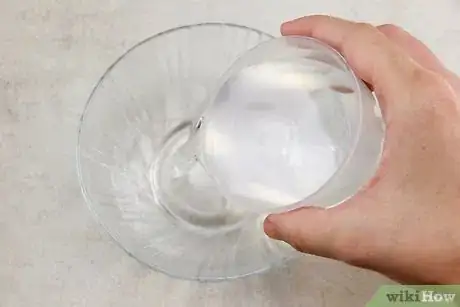
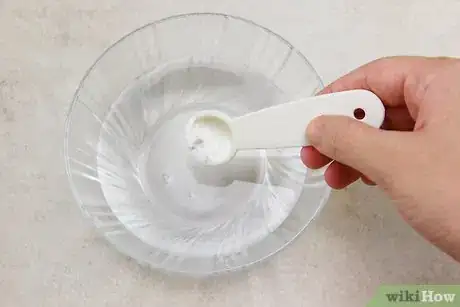
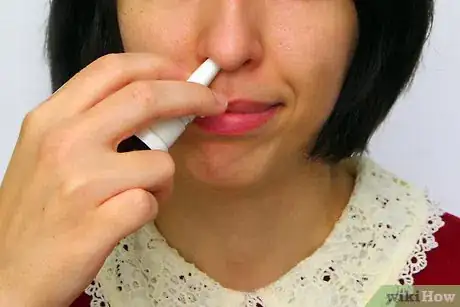
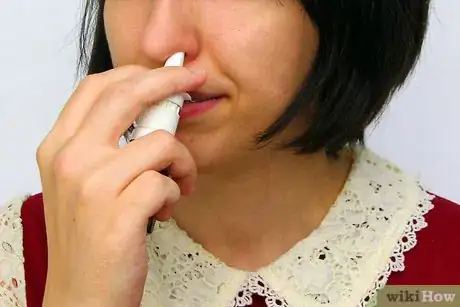
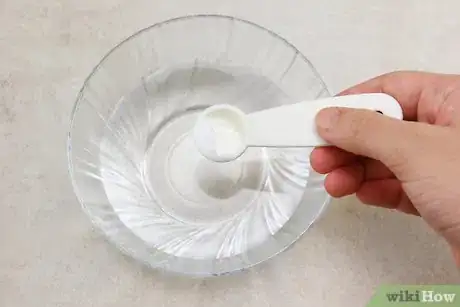
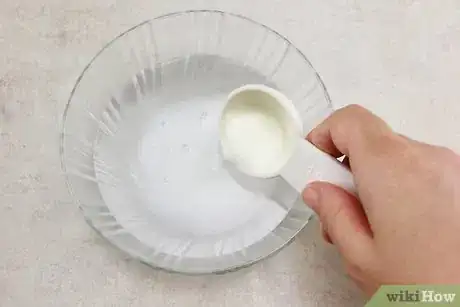
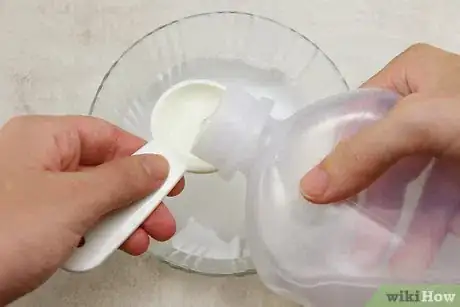
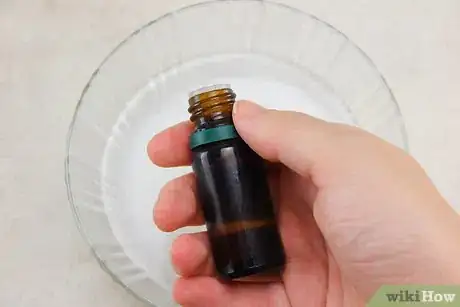
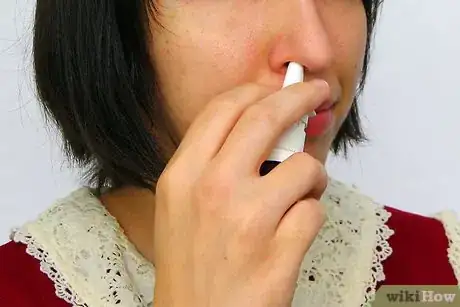
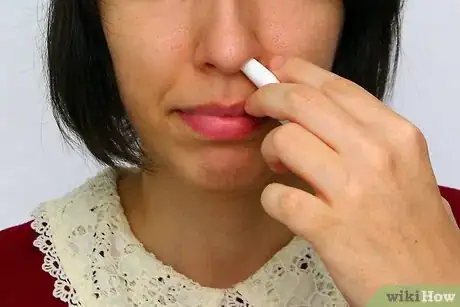
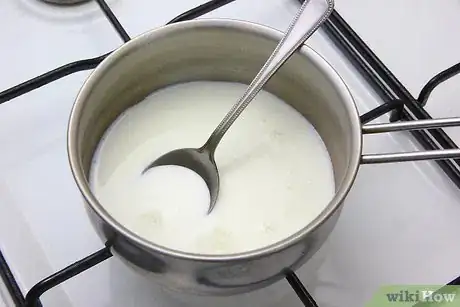
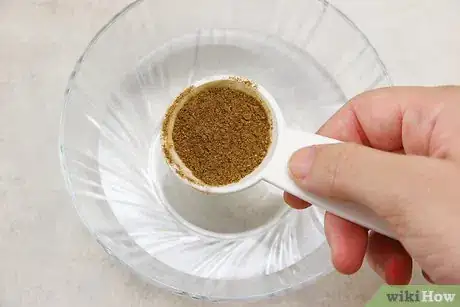
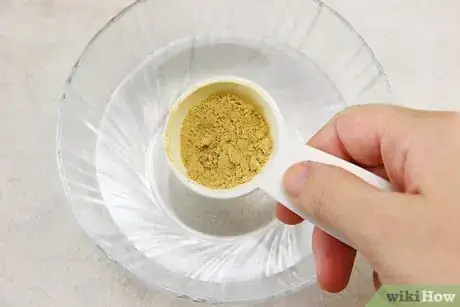

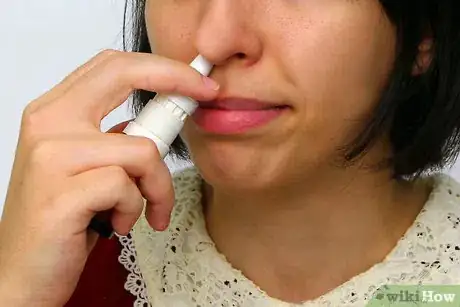

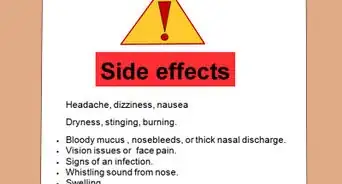
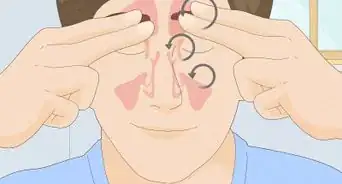



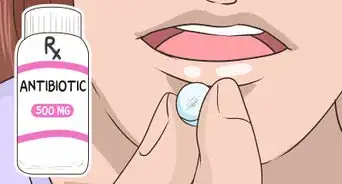
















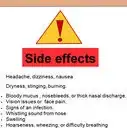





































Medical Disclaimer
The content of this article is not intended to be a substitute for professional medical advice, examination, diagnosis, or treatment. You should always contact your doctor or other qualified healthcare professional before starting, changing, or stopping any kind of health treatment.
Read More...